How to Grow Big, Juicy Watermelons in Small Spaces
Grow large, delicious watermelons even in limited spaces with innovative container gardening techniques.
This method maximizes your space and provides the perfect environment for cultivating sweet watermelons.
Discover how easy and rewarding it is to enjoy fresh, homegrown watermelons.
Harvesting and Storing Watermelons
Ready to enjoy your homegrown watermelons? Master the art of harvesting at peak ripeness and storing them properly to savor their juicy sweetness longer.
Harvesting
Harvest time depends on the climate, season, and watermelon variety. Generally, it’s about 80-90 days after planting or 30-60 days after flowers appear.
To check if a watermelon is ready, tap it—if it sounds hollow, it’s likely ripe. Also, look for the tendril nearest to the stem to turn brown.
When harvesting, cut the watermelon from the stem using a sharp knife or shears, leaving a short piece of stem attached.
Storage
While watermelons are best eaten fresh, you can store extra ones in the fridge for up to two weeks.
Helpful Tips for Growing Watermelons
Want to grow perfect watermelons? These practical tips will guide you through planting, nurturing, and harvesting for a bountiful and delicious watermelon crop.
Sunlight
Make sure your container gets at least 8 hours of sunlight daily. Rotate the container occasionally so all sides get equal light.
Avoid Stress
To keep the fruit sweet, avoid stress factors like sudden temperature changes, pests, diseases, too much or too little water when the fruits are maturing.
Support for Growing Melons
Growing watermelons on a trellis saves space. Use netting, a bag, or a stretchable cloth to create a hammock that supports the fruit as it grows.
Growing Watermelon in Containers
Think watermelons only thrive in large gardens? Discover how to grow them successfully in containers, even in small spaces, with these easy and practical tips.
Set Up Soil and Containers
Choose a large container, like a half wine barrel or a deep 5-gallon bucket, with holes at the bottom for drainage to avoid water buildup.
Pick the Right Watermelon Type
Compact varieties, such as “Sugar Baby” or “Bush Sugar Baby,” work best in containers. These smaller types give you delicious, juicy watermelons in a size that fits well in small spaces.
Plant Seeds or Transplants
To get started faster, use young watermelon plants, or start seeds indoors and move them outside once it’s warm. Place seeds or plants about 1 inch deep, following the package instructions, and thin out to the strongest plant if using seeds.
Fill Container with Potting Mix
Use a good-quality potting mix that drains well and has plenty of organic materials. Adding compost or aged manure can give extra nutrients and space for the roots to grow.
Caring for Your Watermelon Plant
Healthy watermelon plants need the right care. Learn essential techniques to keep your plants thriving, from watering and feeding to managing pests and diseases.
Fertilizing
When flowers and small fruits start to appear, apply a balanced, slow-release fertilizer. Avoid fertilizers with too much nitrogen, as this can promote more leaves than fruits.
Pruning
For better fruit quality, limit the plant to one or two main vines. Remove any small side shoots that pop up.
Pollination
Watermelons need pollination to grow fruit. If bees aren’t around, gently transfer pollen by brushing the center of a male flower onto the center of a female flower or use a small paintbrush to help.
Pest and Disease Control
Watch for pests like aphids and cucumber beetles. Neem oil or insecticidal soap can help manage them. Proper air circulation and spacing reduce disease risk, and mildew-resistant varieties can offer extra protection.
Watering
Keep the soil evenly moist, but not soaked, by ensuring the container has good drainage. In full sun, water the plant daily, and on very hot days, twice may be necessary.
Once the fruits begin to grow, reduce watering frequency, being careful not to overwater or underwater for the sweetest melons.

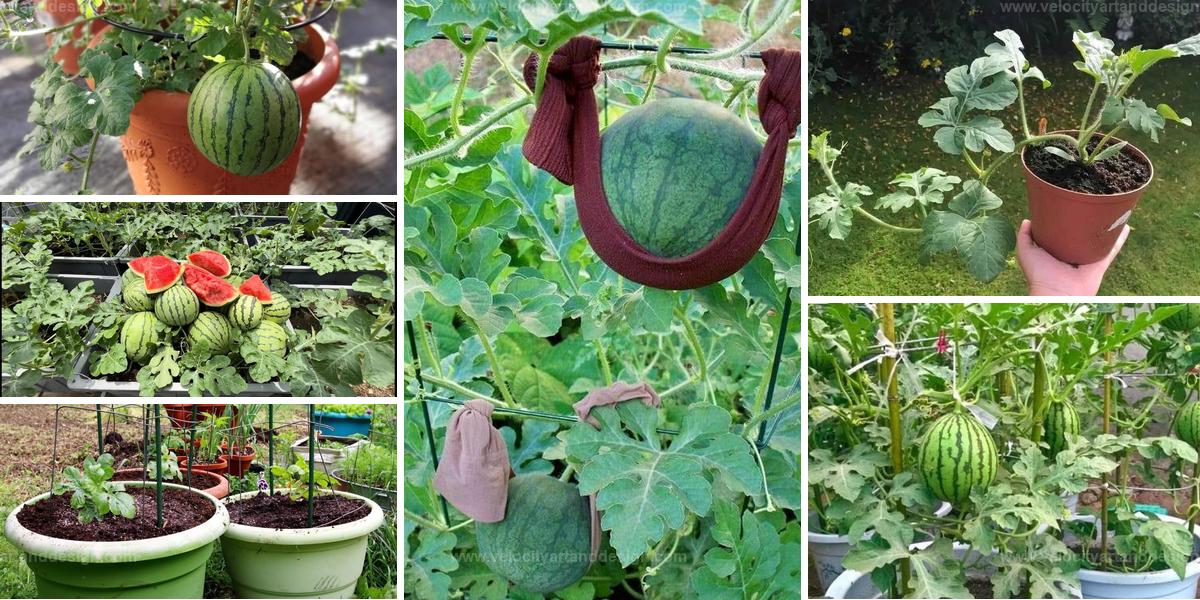
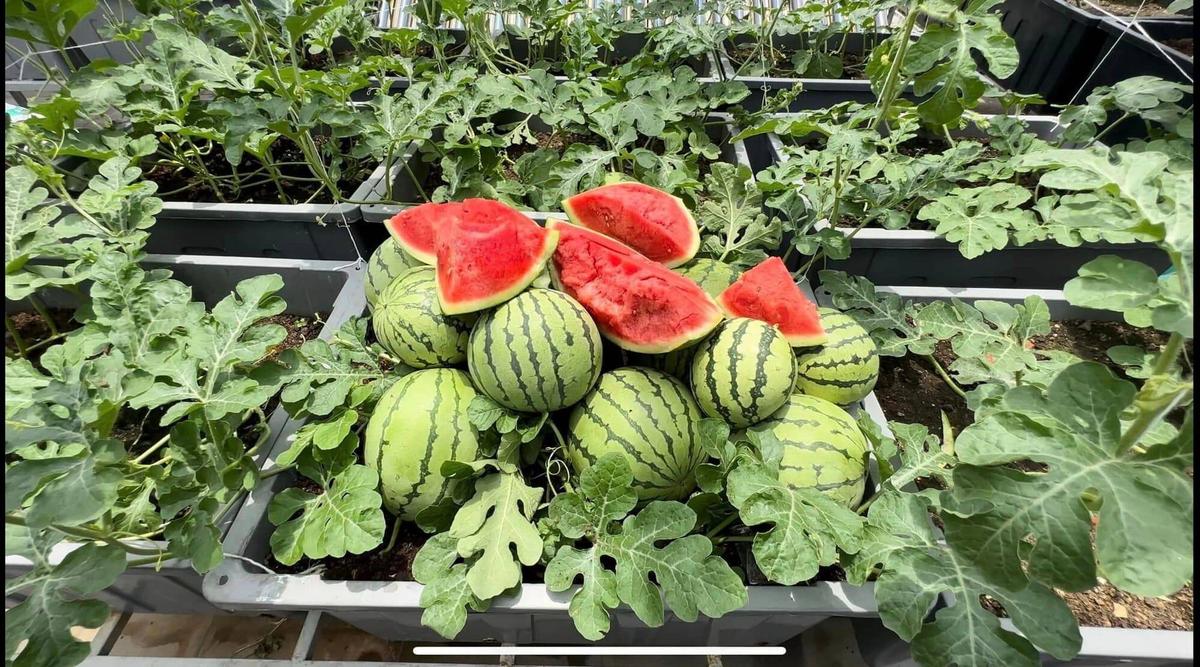
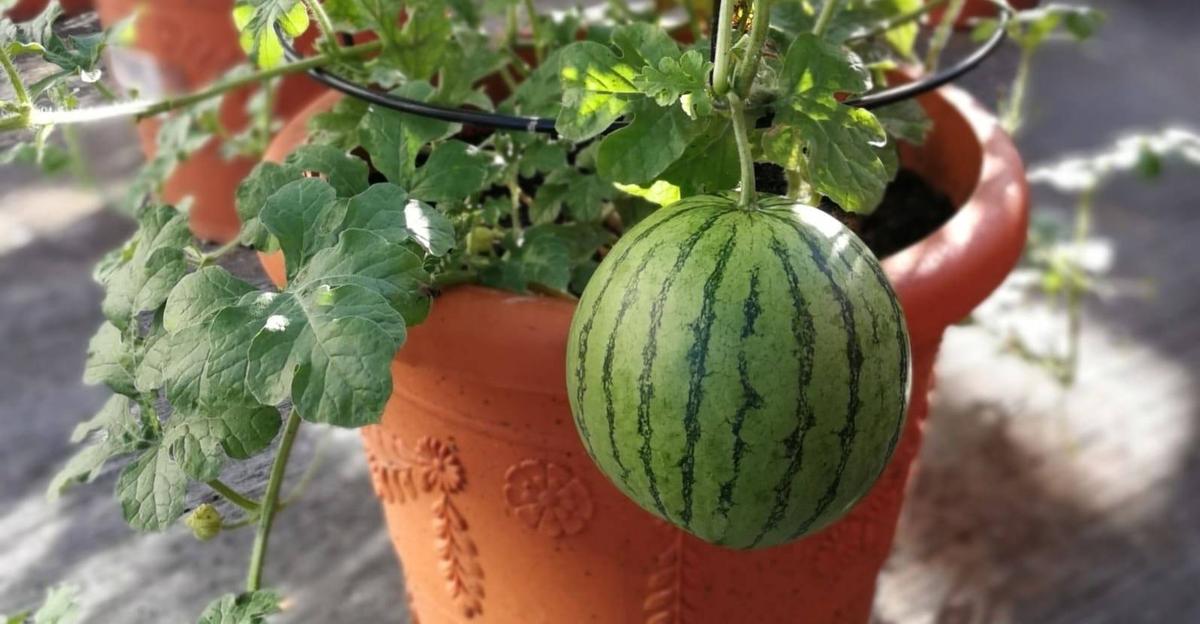
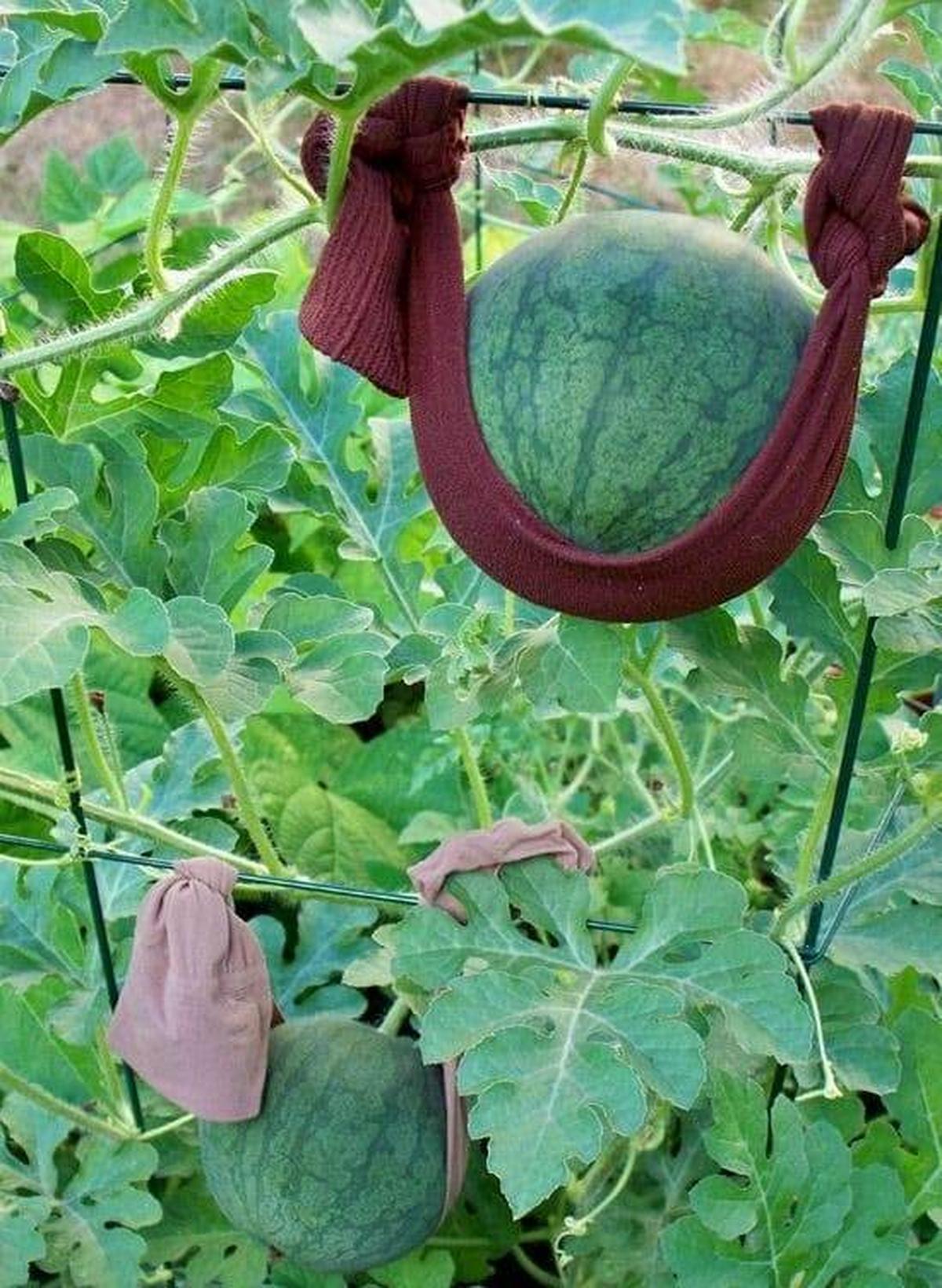
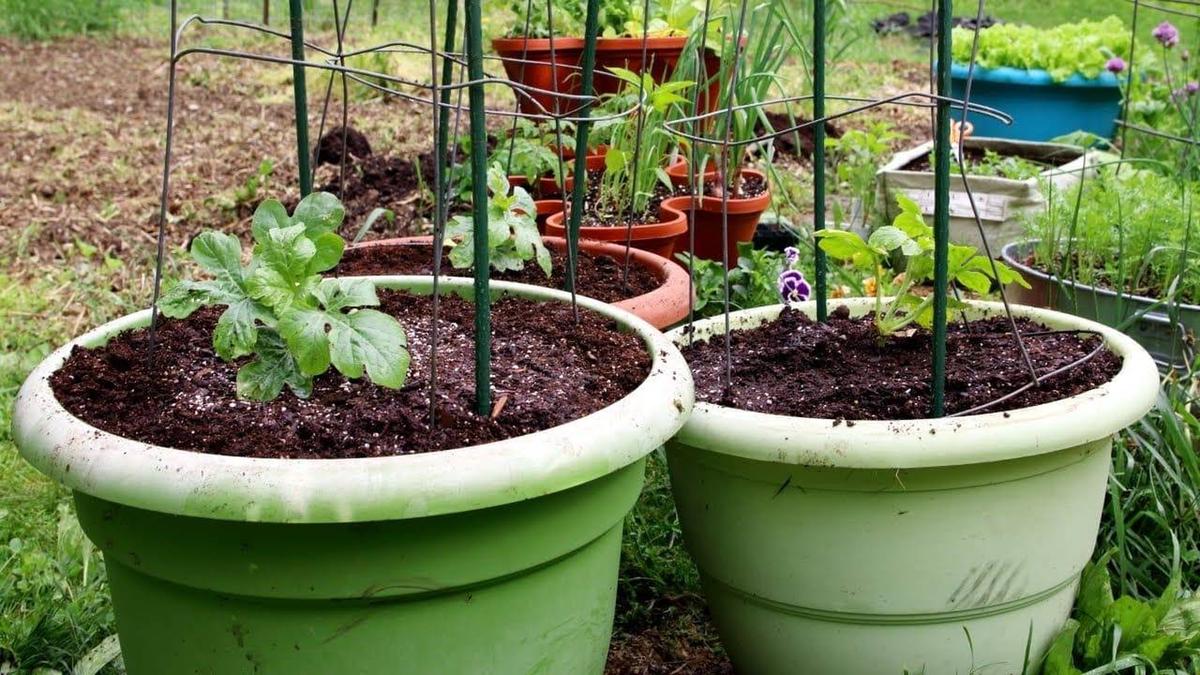
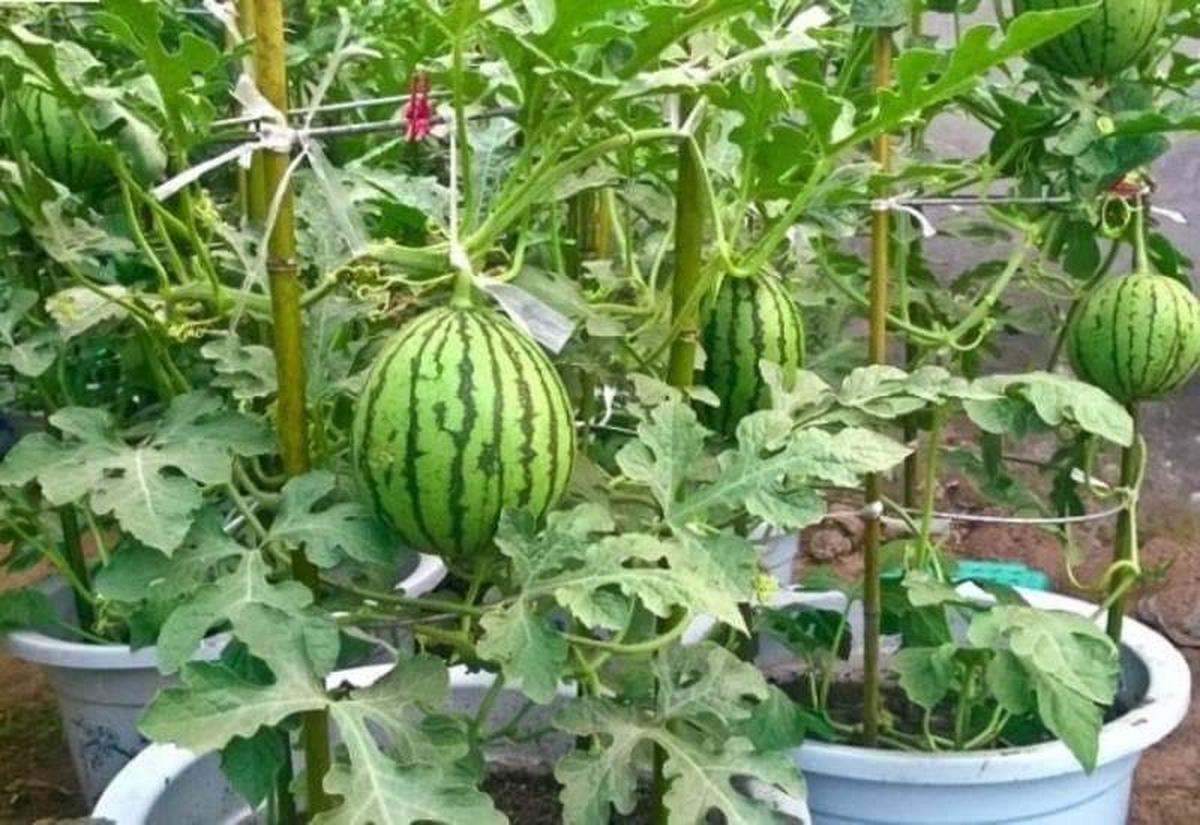
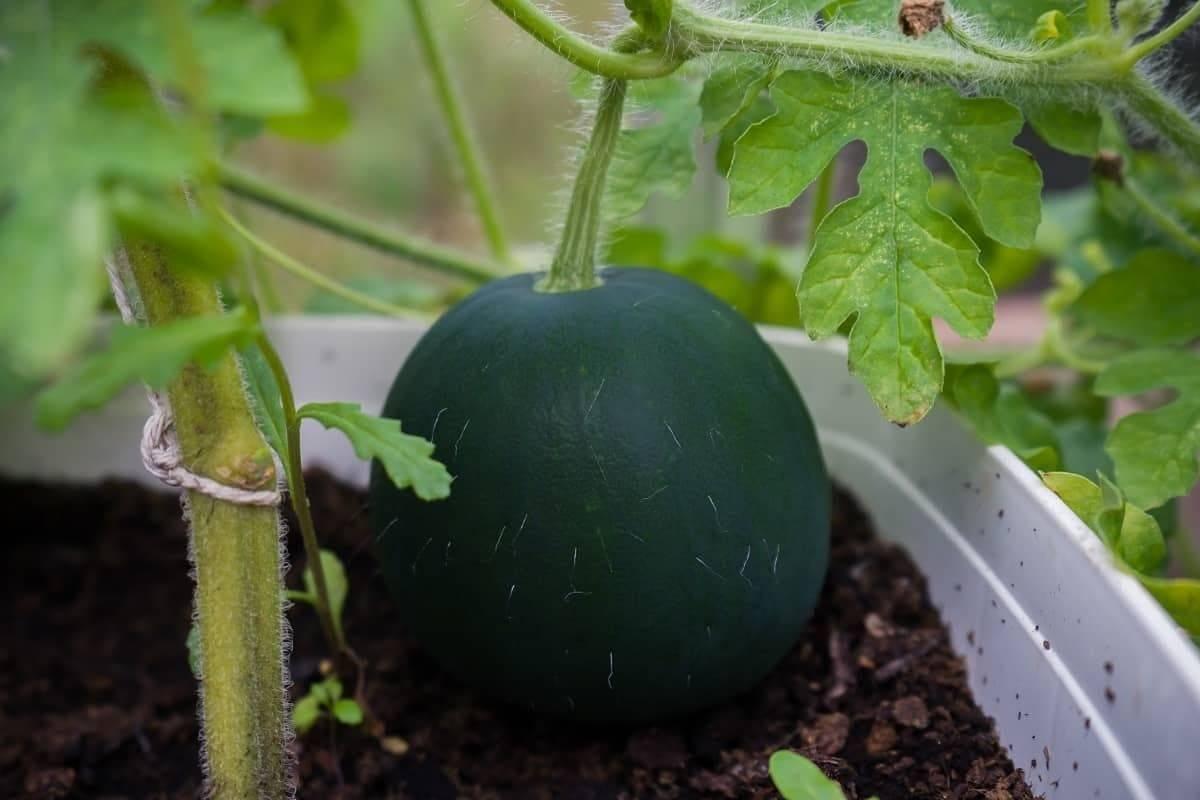
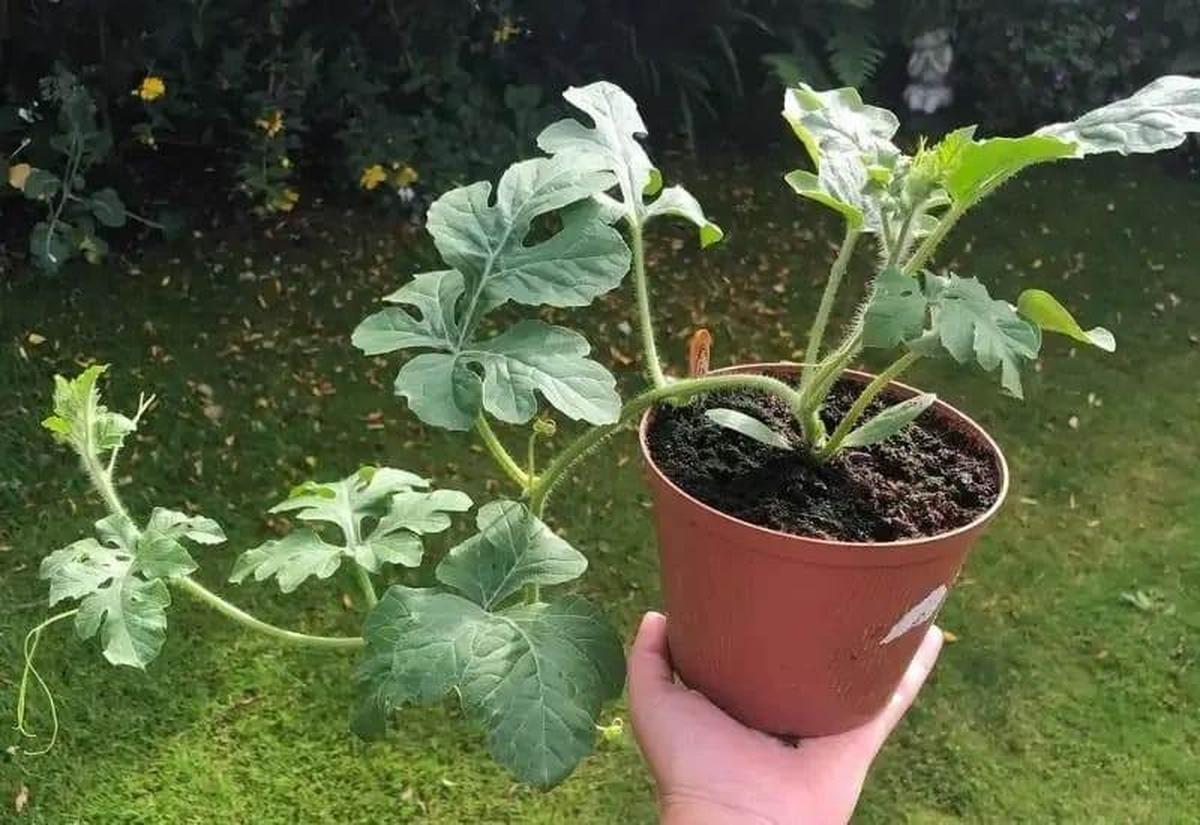
James Turner
Founder & Lead Designer
Expertise
Interior Design, Sustainable Design Practices, Spatial Planning, Innovative Material Applications, Contemporary Art Techniques, Visual Communication, Multimedia Artistry, DIY Design and Home Projects, Eco-Friendly Living Spaces, Creative Solutions
Education
University of Cincinnati College of Design, Architecture, Art, and Planning (DAAP)
Columbus College of Art & Design (CCAD), Columbus, OH
James Turner is the founder and lead designer at Velocity Art and Design. He studied Interior Design at the University of Cincinnati, focusing on eco-friendly design and smart use of space.
Later, he expanded his artistic skills with a Fine Arts Certificate from the Columbus College of Art & Design, where he learned about modern art and visual storytelling.
With over 10 years in design, James is passionate about making spaces that are both beautiful and practical. He shares his DIY tips and creative ideas to inspire others to explore their own creativity and transform their living spaces.